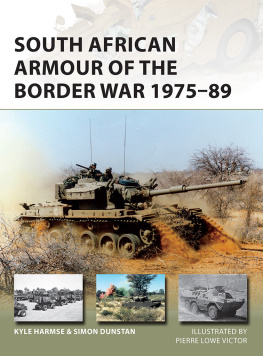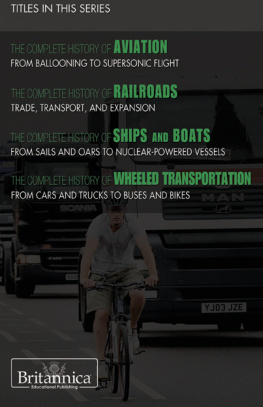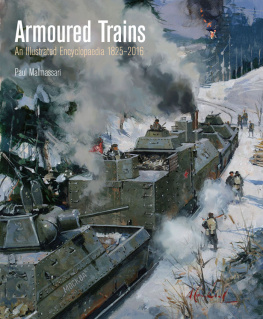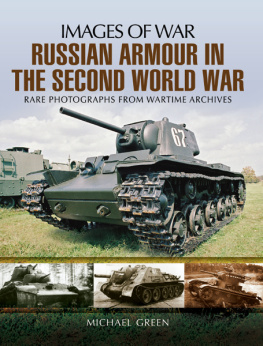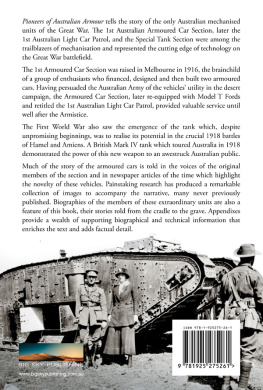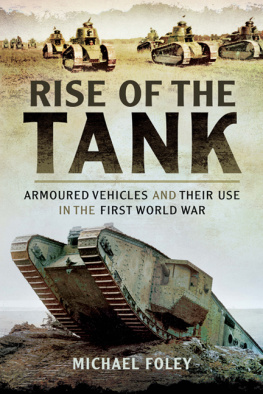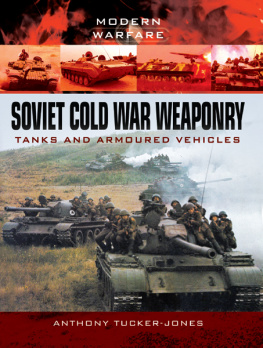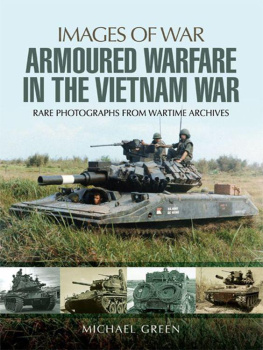
Contents
Pre-Second World War Wheeled AFVs
Second World War Wheeled AFVs
Cold War Wheeled AFVs
The High Mobility Multipurpose Wheeled Vehicle
Post-Cold War Wheeled AFVs
Dedication
This book is dedicated to Colonel Royal P. Davidson, an officer in the Illinois National Guard, who was the first to mount a weapon and armour on an American wheeled vehicle in 1898.
Foreword
F rom the very earliest and crude designs of placing a machine gun on a car with an armoured shield, to the behemoth Mine Resistant Ambush Protected (MRAP) vehicles used in Iraq and Afghanistan. The author takes the reader through the design, testing, development, acceptance and use in the armed forces of the United States of wheeled armoured fighting vehicles from the First World War, up to the conflicts in Iraq and Afghanistan.
It becomes clear through the authors tracing of the developmental history of systems that there is a distinct linkage to previous designs and systems; in some cases to improve on failed designs. The HMMWV (High Mobility Multipurpose Wheeled Vehicle) is a great example. Originally designed as a replacement for a number of stop-gap rear area vehicles, in 2003 it quickly found itself conducting convoy security in Iraq, a task it was never designed for. The US Army responded with the Up-Armored HMMWV.
The downside of the Up-Armored HMMWV program was the fact that the vehicle had never been intended to carry that much extra weight, which badly strained its engine power capacity, transmissions and suspension systems. Another consequence of surrounding American troops with armour protection in their Up-Armored HMMWVs was the interior heat build-up, which required air conditioners. Unfortunately, these drained even more power and greatly increased fuel consumption for the vehicle. It got to the point where the Up-Armored HMMWVs were called groaners by those who served on them due to how heavy they had become.
In sharp contrast to its long-time preference for fully-tracked armoured fighting vehicles, the US Army eventually embraced the concept of wheeled armoured fighting vehicles with the introduction of the eight-wheel Stryker in 2002. Combat experience soon resulted in a host of modifications to the vehicle. Unlike the HMMWV, the Stryker was built to expand and incorporate modifications without altering the original design.
As the Stryker changed how the US Army went to war, the MRAP changed how Americas wheeled armoured fighting vehicles would be designed in the future, with all being fitted with mine resistant V shaped hulls, and a host of soldier protection features.
Randy R. Talbot
Command Historian (retired)
US Army TACOM Life Cycle Management Command
Acknowledgments
A s with any published work, authors must depend on a great many people for assistance. These included over many years my fellow author and long-time mentor the late Richard Hunnicutt and my good friend Brent Sauer, who was kind enough to allow me to use some of his pictures for this work. Other friends who kindly supplied pictures for this work are credited in the captions.
Both the paid and volunteer staff of the now closed Patton Museum of Armor and Cavalry provided me with a great deal of assistance. Former museum volunteers who made an extra effort to assist me include Dean and Nancy Kleffman, as well as Don Moriarty. For the sake of brevity, all images from the former Patton Museum of Cavalry and Armor will be credited to the Patton Museum.
Peter Keating, director of communications for General Dynamics Land Systems (GDLS), was very generous with pictorial support as always. All those from the firm will be shortened to GDLS. Craig McNab, the director of communications for AM General, also contributed images for this book and answered many questions.
Pictures acquired from various Department of Defense (DOD) web sites, which include Defense Imagery.mil, and Defense Video & Imagery Distribution System (DVIDS). For the sake of brevity, all will be credited to the DOD.
A US Army entity that assisted the author in acquiring historical photographs for this work was the Command Historians Office of the TACOM Life Cycle Management Command (LCMC). All pictures from this organization are credited to TACOM, for the sake of brevity.
Notes to the Reader
The main focus of this work is the employment of American-designed and built wheeled armoured fighting vehicles (AFVs) in American military service, and not their use in foreign military service.
The starting point for the Second World War in this work will not reflect its official beginning in September 1939. Rather, this work will use December 1941, the month of Americas official entry into the conflict.
For those unfamiliar with 4 4, 6 6, 8 8 or other number combinations mentioned in this work: the first numeral represents the numbers of wheels on a given vehicle, the second numeral identifies the number of driven (powered) wheels on that vehicle.
Chapter One
Pre-Second World War Wheeled AFVs
I n 1898, Colonel Royal P. Davidson, an officer in the Illinois National Guard, mounted a machine gun protected by an armoured shield on a small Duryea three-wheeled car. This was Americas first wheeled armoured fighting vehicle (AFV), although it never entered into US Army service. He later mounted the same armoured shield protected machine gun on a four-wheel Duryea car.
Davidson went on to progressively develop a series of new armoured cars, based on the chassis of Cadillacs. In 1910, Davidson displayed several partially armoured, machine gun equipped vehicles, and in 1914 he unveiled a fully armoured, machine gun equipped armoured car. Despite Davidsons best efforts, the US Army showed no interest in his vehicles.
Other Contenders
Davidson was not alone in envisioning a future for wheeled AFVs with the American military. In 1915, the US Army tested a vehicle they referred to as Armored Car No. 1. It was a fully armoured machine gun equipped vehicle based on the chassis of the Jeffery Quad truck.
The White Motor Company came up with their own vehicle in 1915, which the US Army labelled Armored Car No. 2. Like the Jeffery vehicle, it was a based on a four-wheeled truck chassis, completely armoured, and armed with machine guns.
In 1916, the New York National Guard acquired three open-topped armoured cars. Each vehicle built upon a different commercial truck chassis. That same year, the US Army pressed into service all three of the New York National Guards new armoured cars, as well as both the Jeffery and White armoured cars, for use during the Mexican Expedition, which lasted from 1916 to 1917.
The Marines Get Involved
The US Marine Corps (USMC) acquired a single King Armored Car from the Armored Motor Car Company in 1916, with two more acquired the following year. The King Armored Cars were fully armoured, and armed with a single turret-mounted small-calibre machine gun. They were based on the chassis of a 4 2 car designed and built by the King Motor Car Company.
The USMC testing of the three King Armored Cars went well enough that eight more were ordered in 1918, which allowed the forming of the 1st Armored Car Squadron. However, not everybody thought the King Armored Car was worth acquiring. In a 1919 report by a USMC captain named Drum appears this extract:
Found only seven in commission and five of these put through testing. Performance not all that good, as the design is poor and insufficient persons available to keep cars in running order. Only well-trained drivers can operate the cars. The XO [executive officer] of the Armored Car squadron, 2Lt Charles B. Long, is one and can handle it in any terrain reasonably expected. Cars are underpowered, weak transmissions, but could render good service if overhauled. Recommend that of the eight cars at Phil [Philadelphia] six be entirely taken into overhaul, other two have armour removed, use chassis for spares.
Next page



